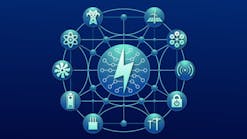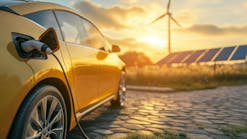There’s an old joke that says hydrogen is the fuel of the future, and always will be. But today, at long last, a hydrogen-fueled future is no longer just a pipe dream — it’s in the pipeline.
What’s different? Slowly but surely, the world is recognizing that no single alternative energy platform can support global energy needs as we work to decarbonize the economy and our society.
Instead, technologies like hydrogen fuel cells and advanced batteries must operate in partnership with each other and in support of other sustainable power generation platforms like wind and solar. While battery technology has recently made great strides in the transportation sector, among others, hydrogen is gaining momentum as a critical, sustainable energy source.
Perhaps most importantly, governments are getting involved and increasing their support and investment in hydrogen as a key part of their critical infrastructure. From Europe to Asia to the Pacific, more are recognizing hydrogen’s potential to address some of the most challenging issues with sustainable power generation, including capturing excess production and balancing electricity supply across seasons and geographies.
Japan and Australia are building ships that will use hydrogen to transport energy around the world. TKI, a natural gas company in the Netherlands, is aiming to create the world’s first hydrogen grid by 2028. Three utilities in England have announced they will create a hydrogen grid in northern England to support 3.7 million homes by 2028 and over 400,000 businesses. And the list goes on.
With government investment has come greater buy-in from the industry, with investment in hydrogen at an all-time high.
For example, Boeing is currently working on using solar energy to capture hydrogen on a chip. Microsoft is studying how to use fuel cells in their servers. Hydrogenics, a manufacturer of hydrogen electrolyzers and fuel cells has built 60 fuel cell trains for use in four German states. NEL, a manufacturer of hydrogen electrolyzers used to make electricity from water, is greatly increasing its capacity to supply the technology to support the creation of a hydrogen network for Class 8 trucks being developed by Nikola Motors in the United States.
Toyota believes strongly in the potential of hydrogen fuel cells to be the power train of the future, and we are in good company. Hyundai, Honda, and Mercedes-Benz all offer fuel cell vehicles now. In an annual survey of automotive industry executives (conducted last year by KPMG), hydrogen was ranked as the number one trend in the automotive industry — above autonomous technology and connectivity.
With all of this activity, it’s no surprise that hydrogen costs are dropping quickly.
A few years ago, it cost more than US$1000 to produce a single kilowatt of power from hydrogen fuel cells. Last year, the U.S. Department of Energy reported costs had dropped drastically to US$53 per kilowatt.
What’s more, the growth of renewable power generation capacity, and the continued decline in green power production costs, has had a powerful spillover effect on the hydrogen sector — making it easier and cheaper to convert renewable energy into something new: green hydrogen, helping to transform its reputation and ultimately eliminate dependence on fossil fuels for hydrogen supply.
Of course, there’s much more to be done, and challenges remain. The global hydrogen infrastructure has a long way to go, and hydrogen stations remain limited and regionally concentrated.
But there too, we see continued progress. The United States, Japan, China, Germany, and France have all committed to building hydrogen fuel cell stations. And while much of the hydrogen investment in the United States has focused on California, Air Liquide has just completed four new stations in New York, Massachusetts, Connecticut, and Rhode Island.
Automakers are also working together, in partnership with the National Renewable Energy Laboratory, to improve the design of station components and accelerate overall infrastructure growth. Studies are also underway to determine how hydrogen can be used to supply electricity back to the grid and to explore the benefits of fueling both battery and hydrogen vehicles in the same location.
In fact, the progress is such that it’s now almost impossible to imagine a future in which hydrogen doesn’t play a significant and complementary role to batteries in the pursuit of green energy.
This is progress to be celebrated, and it’s helping to shape a future that is greener and more sustainable. At long last, hydrogen is not just a long-shot dream. It has finally arrived as a fuel that is ready to help reshape the world.


